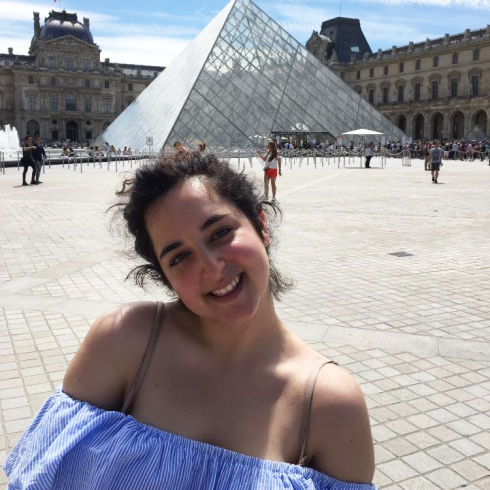Studying abroad forces me to think about topics that I otherwise wouldn't consider. I find myself walking home from class, so sincerely focused on a politician born centuries ago who walked my same streets, or the personality of a controversial Pope who once worked in my same neighborhood.
Recently, Federica Giacomini, an art restorer and member of the Superintendence for the Cultural Heritage of Rome, came to speak to students at IES Abroad Rome. She gave a lecture titled “Conservation as an instrument of knowledge.”
She spoke about the work that went into cleaning the Sistine Chapel. Specialists worked on restoring the frescoes in the chapel for years - from the 1980s into the nineties. Those involved in the restoration removed hundreds of years worth of oil, dirt and dust from the frescoes.
Once finished, the room looked entirely new. Previously, the frescoes were shadowy and brown. It was now bright, almost too much to look at at once. The colors are magnificent - bright blues and orange. The characters in the frescoes came to life.
Giacomini said that the cleaning was controversial for a number of reasons. Scholars convinced themselves of a dark and brooding Michelangelo, and that was mostly based off of the former Sistine Chapel. They would now have to completely rethink who Michelangelo would have been. People were also afraid that the restorers would make mistakes and ruin Michelangelo's masterpiece. For the most part, the restorers maintained the quality of the original pieces. I urge you to luck up "before" and "after" images of the chapel, because the difference is astounding.
Giacomini also spoke about cleaning and restoring individual paintings internationally. Sometimes, she said, thanks to technology like X-rays, specialists find that layers were added to paintings years - sometimes hundreds of years, later. What do you do with that? If a character was added, a neckline covered - do you keep the piece as is, or do you try to uphold the image that the artist originally intended?
The answer, Giacomini said, has depended on the style of the restorers. Right now, the answer is probably to leave the piece, because there is no way to know exactly what it would have looked like the day it was painted hundreds of years ago. Paintings begin to change and age the moment they are put aside and completed.
These are questions I thought very little about before coming to Italy. But now I am interacting with people who involve themselves with these questions everyday. It’s amazing, really.
I just thought about my first blog post, and how I wrote about this same idea. I knew I would be concerned about people, ideas and piazzas that I then knew nothing about. But of course, you can’t picture how you’ll feel when it actually happens.
I have favorite churches in Rome. In one, the fresco refuses to be contained by the ceiling - angels fall slightly outside the borders, down the ceiling. In another, the entire basilica is organized into biblical scenes. Their frames are golden-colored, so if you go during the right time of day the light in the space is truly “heavenly.” You don’t have to be an art historian to feel what the artists who designed the space intended.
I’m worried that I haven’t seen enough, that I will never have seen enough of Rome. Wish me luck as I scramble to fit in as much as I can.

Naomi Farahan
<p>Born and raised in Indiana. Very likely to ask, “if you could eat anything right now, what would it be?” at the wrong times. Join me as I write my way through Italy!</p>









